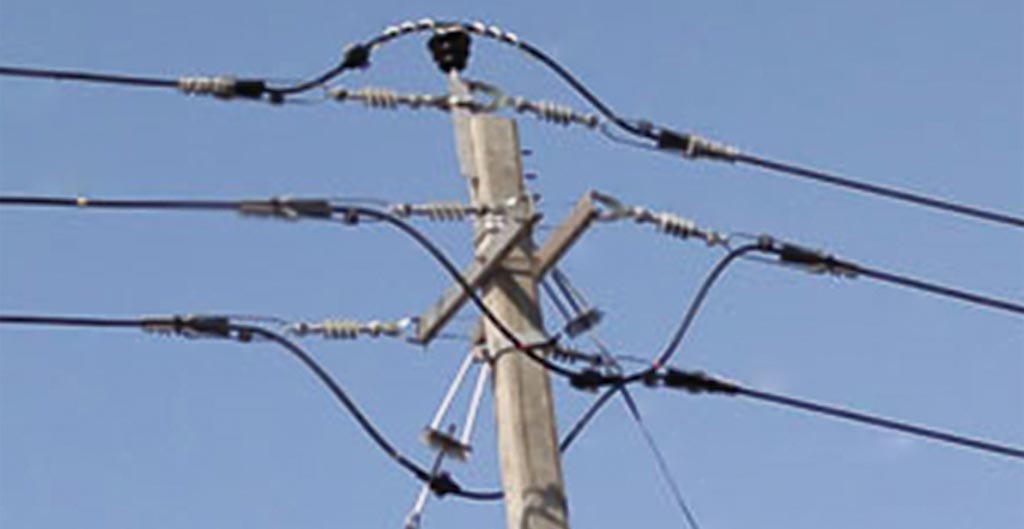Medium Voltage Covered Conductors: A Safety Solution for Wildlife
By EPR Magazine Editorial September 8, 2017 5:11 pm IST
By EPR Magazine Editorial September 8, 2017 5:11 pm IST

Using bare conductors on the overhead distribution lines in forest and wildlife sanctuaries resulting fatal accidental death of several wildlife animals and big birds due to electrocution.
Presently we are witnessing several incidents where wildlife is been fatally electrocuted in India. In 2014, around 400 Greater Flamingos have died in 10 days due to electrocution by high tension cables near their breeding grounds in Gujarat, as many as 139 greater flamingos were electrocuted in Kutch desert wildlife sanctuary. On the night of 4th September 2015, a large tusker was electrocuted by a sagging high tension electric cable in Kaziranga national park, Assam. This year, on January 25, a female elephant died due to electrocution in the forests of Odisha’s Rourkela district.
Two leopards, one tigress and two sambar deer were also electrocuted between January 11 and 14 in 2011 in different forest divisions of Maharashtra’s Nagpur district. As per Tito Joseph of the Wildlife Protection Society of India (WPSI), every year at least 20 elephants, 11 leopards die due to electrocution.
According to CEA (Central Electricity Authority) mandatory guidelines, medium voltage covered conductors (MVCC) should be used to reduce the ROW (right of way) of HT lines which are passing through the forest area for the safety of wildlife.
Apar has taken the lead from the ‘Make in India’ initiative to develop MVCC which are currently imported from overseas manufactures.
Challenges faced by Indian utilities
Technology
Covered conductors consist of a conductor insulated by a covering made of insulating material(s) as protection against accidental contacts with other covered conductors and with grounded parts such as tree branches etc. In comparison with insulated conductors, this covering has reduced thickness, but is sufficient to withstand the phase-to-earth voltage temporarily.
Construction of MVCC
Conductor: Longitudinally water tight stranded all aluminium alloy (AAAC) or aluminium conductor steel reinforced (ACSR).
A (conductor screen): Water swellable semi-conducting tape (if required) and extruded semi-conducting compound.
B (inner insulation): XLPE
C (outer insulation): UV protected and anti-tracking black coloured XLPE or HDPE.
Anti tracking properties
Anti-tracking property is must for MVCC outer XLPE/HDPE. As per the experience of several international utilities, in the absence of anti-tracking, XLPE or HDPE, MVCC fails within a short time period of 5-6 months. Anti-tracking jacketing has been specially designed to meet the outdoor conditions and performance requirements of 13.8 KV to 34.5 KV distribution networks. The material has an excellent resistance to arc, corrosion inhibitor, fungicide activity, oil resistance, and weather conditions like humidity, pollution, presence of salt in atmosphere etc. There is a special test method for carrying out the tests for the anti-tracking in SS EN 50397-1.
Applicable Standards
SS EN 50397-1, BS EN 50182, IS 398-2, IS 398-4, IEC 61089
Salient features of MVCC technology
Accessories used by MVCCMoreover lighting protection earthing and arc protection accessories are available.
Easy installation
Covered conductors can be installed in an easy and fast manner. Normal pole to pole spacing can be between 50-70 metres; standard poles of bare conductor can be used for covered conductors as the weight of covered conductors is only about 10-12 per cent higher than bare conductor due to insulation. For fast installation even existing poles of bare conductors can be used without changing the cross arms and other fitting with covered conductor and its accessories.
Benefits of MVCC
Conclusions
Covered conductors are the best economical solutions where ever the safety of human and Wildlife is been challenged or compromised by bare conductors. It gives maintenance free overhead line reliability. Service calls will drastically reduced which means an uninterrupted power supply adding more revenues to the utility. It is a Safe, Economical, environmental friendly, reliable solution for Utility to protect the Wildlife from been electrocuted.
Authored by:
Manish Patel,
Apar Industries Ltd
We use cookies to personalize your experience. By continuing to visit this website you agree to our Terms & Conditions, Privacy Policy and Cookie Policy.